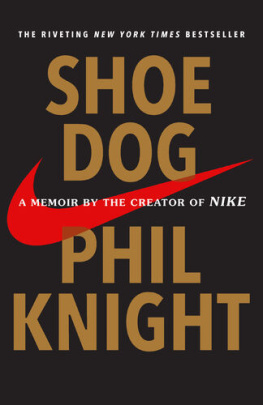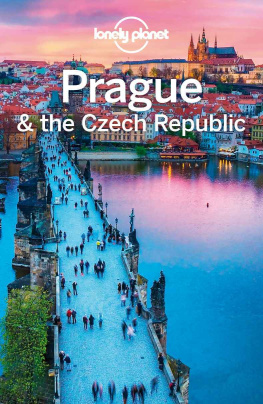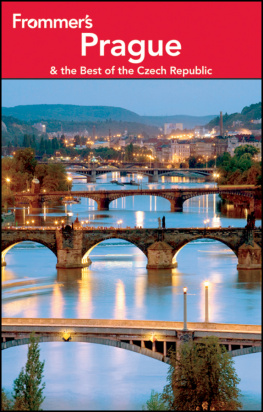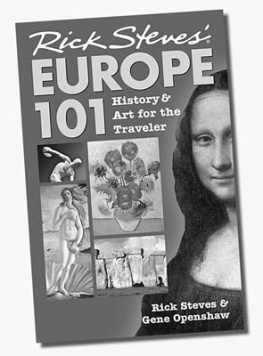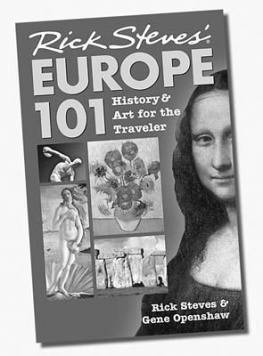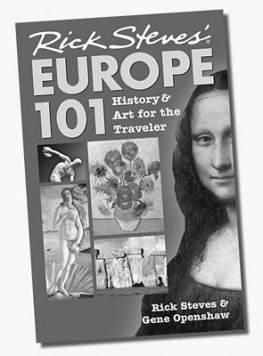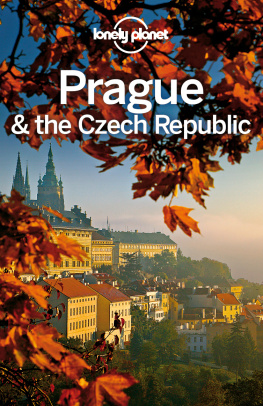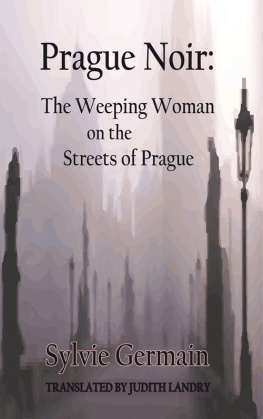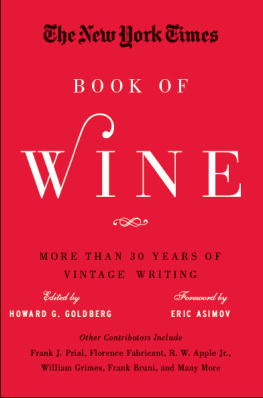Myla Goldberg - Times Magpie: A Walk in Prague
Here you can read online Myla Goldberg - Times Magpie: A Walk in Prague full text of the book (entire story) in english for free. Download pdf and epub, get meaning, cover and reviews about this ebook. year: 2004, publisher: Crown, genre: Detective and thriller. Description of the work, (preface) as well as reviews are available. Best literature library LitArk.com created for fans of good reading and offers a wide selection of genres:
Romance novel
Science fiction
Adventure
Detective
Science
History
Home and family
Prose
Art
Politics
Computer
Non-fiction
Religion
Business
Children
Humor
Choose a favorite category and find really read worthwhile books. Enjoy immersion in the world of imagination, feel the emotions of the characters or learn something new for yourself, make an fascinating discovery.

- Book:Times Magpie: A Walk in Prague
- Author:
- Publisher:Crown
- Genre:
- Year:2004
- Rating:4 / 5
- Favourites:Add to favourites
- Your mark:
- 80
- 1
- 2
- 3
- 4
- 5
Times Magpie: A Walk in Prague: summary, description and annotation
We offer to read an annotation, description, summary or preface (depends on what the author of the book "Times Magpie: A Walk in Prague" wrote himself). If you haven't found the necessary information about the book — write in the comments, we will try to find it.
Times Magpie: A Walk in Prague — read online for free the complete book (whole text) full work
Below is the text of the book, divided by pages. System saving the place of the last page read, allows you to conveniently read the book "Times Magpie: A Walk in Prague" online for free, without having to search again every time where you left off. Put a bookmark, and you can go to the page where you finished reading at any time.
Font size:
Interval:
Bookmark:

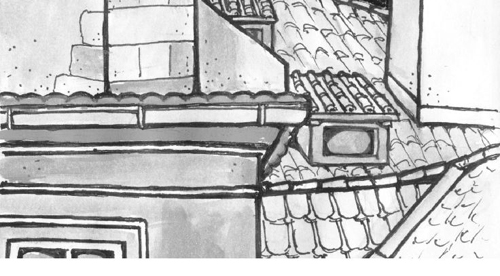
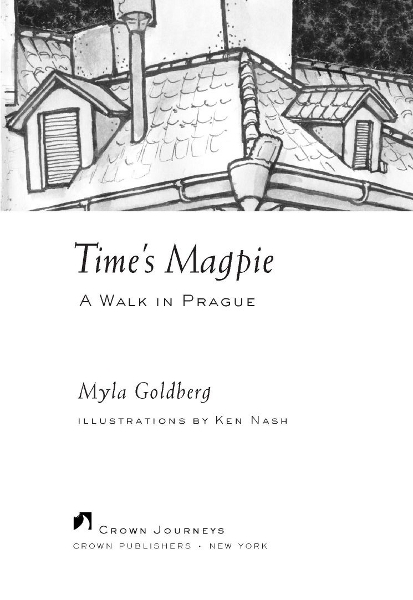
Table of Contents
To Jason, who went with me, and to
Zelie, who came back with us.
You should travel to Prague when the days arelong, so you will be rewarded by a fair view as the train crosses the placid River Vltava....You have had your first glimpse of Prague, and it wasbeautiful, so you set about endeavoring to enter intothe spirit of the place, to absorb its atmosphere andto study its character. For every ancient city thathas stood up against adversity and overcome it hasa very definite character of its own. And it is amysterious and wonderful thing this character, thiscachet of a great city....
B. GRANVILLE BAKER, From a Terrace in Prague, 1923
FORGET THE LONG DAYS. WHEN THE DAYS ARE long, bands of Germans and Italians and Japanese and British mob the narrow streets of Old Town, and herds of American college students in velvet jester hats and PRAGUE DRINKING TEAM T-shirts stampede across the Charles Bridge singing Pearl Jam songs. But in March or April, the worst of winter is over and the tourist hordes have yet to descend; by early September the summer crowds have dispersed. On the edge of a season it is still possible to duck onto a narrow, cobbled side street to find it deserted and to feel time straddling centuries the way Prague straddles its river. So many of Europes cities have been bombed and burnt and torn down and rebuilt again that their physical history survives in stray fragments or not at all, but Prague is times magpie, hoarding beautiful, eclectic bits from each successive era. In Prague, Gothic towers neighbor eleventh-century courtyards, which lead to Baroque and Renaissance houses with twentieth-century bullets embedded in their walls. Art Nouveau hotels abut formerly socialist department stores that now sell French perfume and American sneakers. Through a combination of luck, circumstance, and obstinance, Prague has stockpiled ten centuries of history.
The citys unrelenting profusion of stimuli forces the brain to screen things out, until one day a new sort of detail will ambush an unconscious filter and then appear everywhere, remaking once-familiar streets. Almost every city block displays a plaque commemorating Pragues countless martyrs from across the centuriesresistance fighters and outspoken nationalists, religious heroes and fallen soldiers. Usually these plaques are placed over doorways, or just above eye level on a buildings edge. Small and made of dark, weathered metal, they are easily overlooked but upon noticing one the rest appear, Pragues long, sad memory emerging with each additional step. It becomes impossible to go anywhere without noticing more names; Prague becomes a city overrun by death. Then, the eye will be diverted from the funereal by an ornamental frog decorating a doorway, or a marble frieze of a violinist fronting an apartment building that was a music school a century before. It becomes apparent that almost every building is charmingly adornedeven in the shabbier neighborhoods lion heads roar above doorways or cherubs recline below windows. The memorial plaques fade into the background.
The nemesis of ornament, Pragues graffiti also exists at first as visual static, soft and persistent and easily glossed over. Spray paint crawls across delicate Art Nouveau faades; black tags mar eighteenth-century marble; names are keyed into granite landings and wooden windowsills. In the wake of the Velvet Revolution, graffiti has spread like mold along the citys edifices, leaving practically no surface untouched. Here, where old beautiful buildings are the default rather than the treasured exception to times entropic ruleand where rich architecture belies an impoverished budgetits impossible to safeguard everything. Freed from Communisms straitjacket, the entire city is now wrapped in scrawl.
But the beauty of Pragues youth almost excuses their penchant for vandalism. Preternaturally appealing creatures with sculptural faces, creamy skin, and long, supple limbs, they lean against buildings, cigarettes dangling from their lips.They sip slow drinks in cafes; they spill onto the streets in acid-washed jeans. They cultivate looks of boredom that highlight their full lips and Slavic cheekbones. Their attractiveness is alarming in its universality and in its disappearance at the earliest intimation of middle age. Pragues denizens breathe coal-laced air, drink polluted water, and live on boiled dumplings and pork cutlets, beer and cigarettesa diet that generally allots a person only three good decades. Faces become haggard and loose-skinned; bellies grow and arms become flaccid; spines curve; strange lumps and moles appear.
In Prague there is no culture of continuing care facilities or retirement communities. The old are not shunted away, nor do they move to sunny locales with more golfing opportunities. Prague is home to stooped old ladies with necks crooked like canes, and old ladies with perfect posture.There are old ladies in sensible, square-toed shoes and old ladies with sagging pantyhose stuffed inside bright red Mary Janes, old ladies with large handbags and fuzzy wool caps they knit themselves, and old ladies in ratty fur coats. In Prague the blue-haired old lady is no less common than the violet-haired old lady or the scarlet-haired old ladypunk rock dye-jobs hallucinatory in their vibrancy, and which are still commonplace a decade after the arrival of Western cosmetics might have been expected to impose a certain refinement of hue. Sometimes old ladies are in the company of old men but mostly old ladies are alone, or with old lady friends, or with small, unfriendly dogs. Husbands die, and perhaps there is a small pension, but old ladies still carry baskets filled with groceries. They still make their painstaking way down sidewalks and hold their breath as they risk the first stair of a speeding escalator.
The velocity and intensity with which Pragues inhabitants age merely mirrors times unlikely acrobatics from one city block to the next. A street frequently occupies two centuries at once. In the city center, a T.G.I. Fridays inhabits an eighteenth-century mansion; signs posted on elegant antique streetlamps display the word CASINO in Czech, English, Japanese, and Hebrew; a fourteenth-century boulevard contains a McDonalds, a Pizza Hut, and numerous discos, its sidewalk hucksters proclaiming the virtues of nearby strip clubs.
Pragues magpie instincts are not strictly temporal. The mad rush toward Westernization has resulted in a spectacular street mlange of consumer culture, international tourism, and incipient capitalism. In Old Town, a restaurant tout sports an oversized sombrero and a Mexican poncho on which are emblazoned the words PIZZA and FALAFEL, while a restaurant named Chicago advertises Mexican cuisine. A gaggle of schoolgirls squawks, in accented English, Were from Belgium, mighty mighty Belgium... their voices echoing through the streets. A flock of Japanese tourists photographs the clock tower from the opposite side of Old Town Square, their flashes impotent against the deepening night. Kerchiefed, thick-fingered snack-stand proprietors vendin addition to the traditional sausages and fried cheesea frozen treat called Rentgen, a fluorescent yellow Popsicle on a black skeleton-shaped stick, with a radioactive symbol on its wrapper. On a pedestrian plaza, a street vendor waves a crumpled piece of paper at a cop in desperation, blocking his briefcase of fake Soviet artifacts with his body. From a loudspeaker fronting a downtown bingo hall, a voice drones each successive number in a robotic monotone that suggests imminent death from boredom. At a tram stop, a stray mutt trots back and forth before a woman eating a roll until she feeds him some crumbs. Pragues human beggars opt for complete prostration, facedown on their elbows and knees, hands proffered in supplication, a square of newspaper tucked under their legs for cushioning, but the dogs have better luck.
Next pageFont size:
Interval:
Bookmark:
Similar books «Times Magpie: A Walk in Prague»
Look at similar books to Times Magpie: A Walk in Prague. We have selected literature similar in name and meaning in the hope of providing readers with more options to find new, interesting, not yet read works.
Discussion, reviews of the book Times Magpie: A Walk in Prague and just readers' own opinions. Leave your comments, write what you think about the work, its meaning or the main characters. Specify what exactly you liked and what you didn't like, and why you think so.

